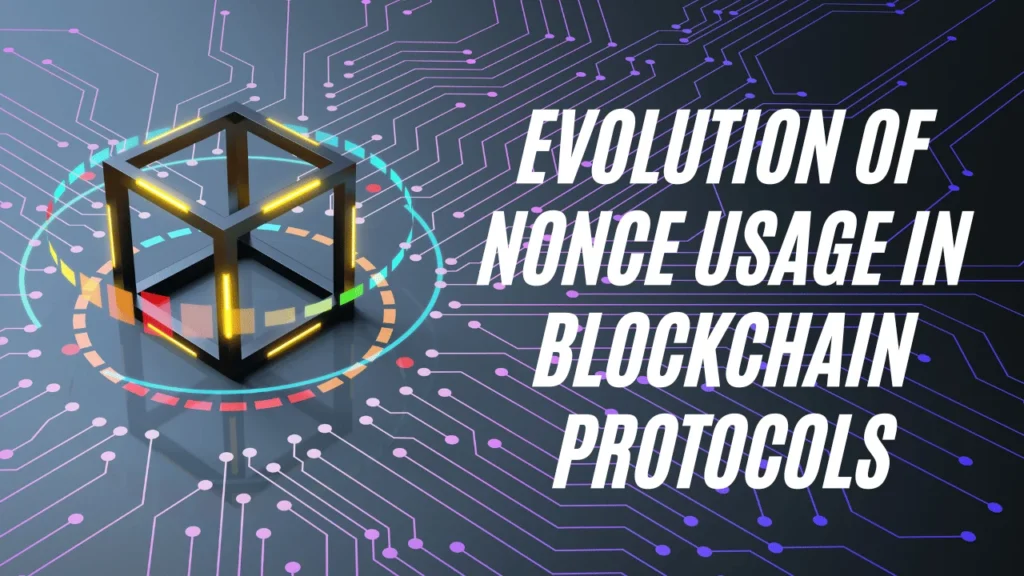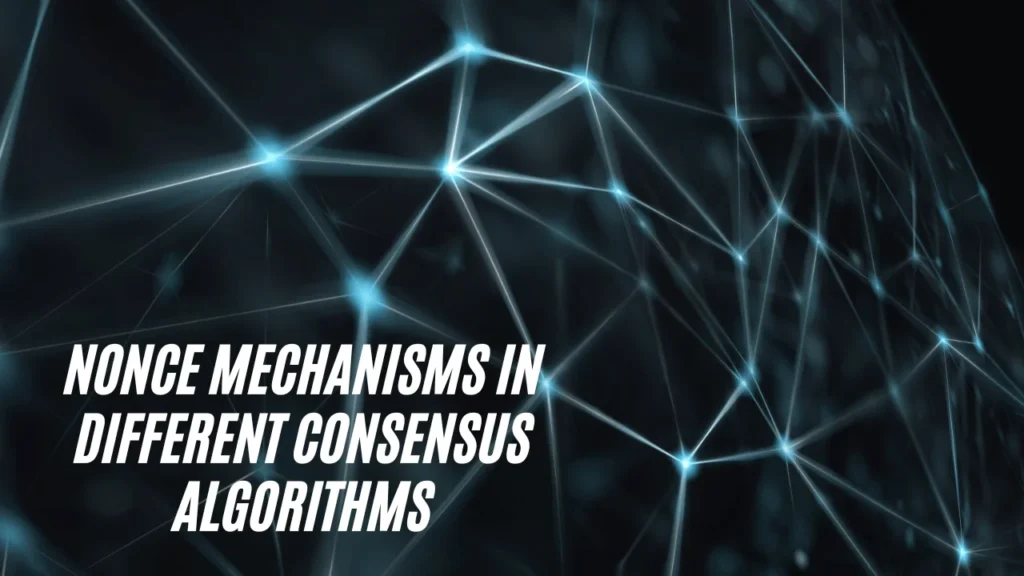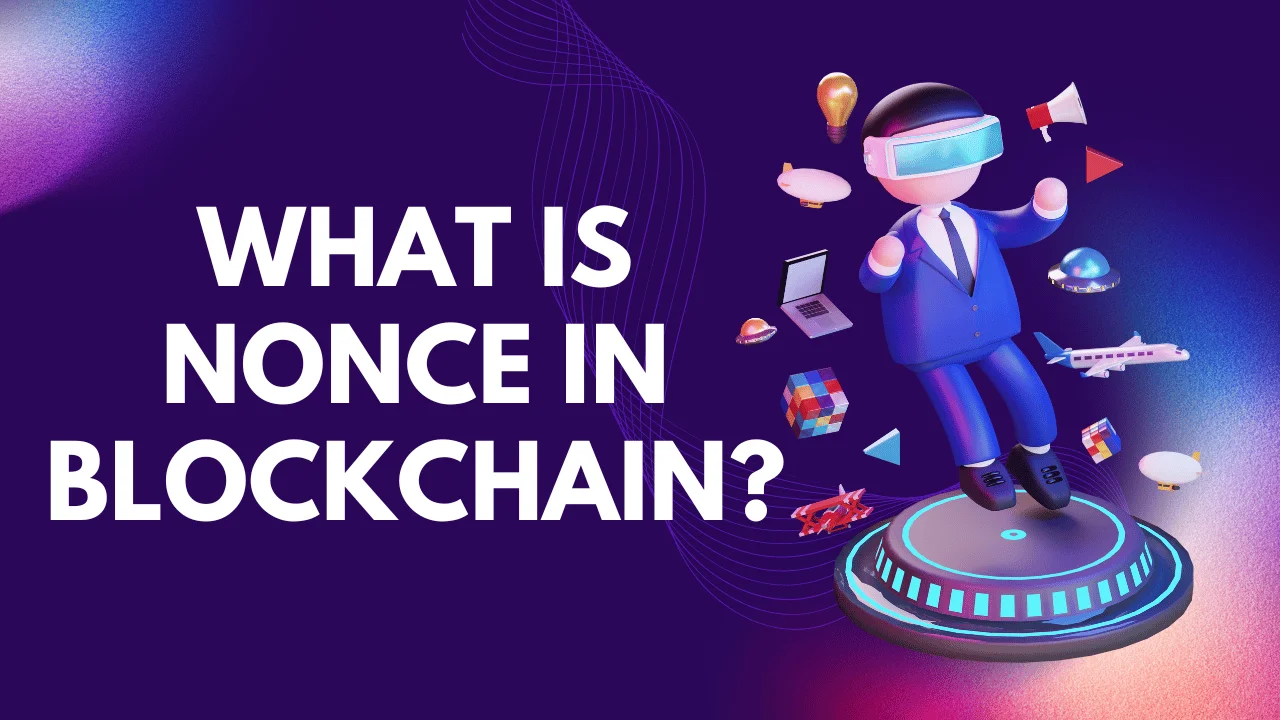As the world of digital innovation is constantly changing, blockchain technology is becoming more important for security and decentralization. A basic but critically important part of this ground-breaking technology is the nonce. What is Nonce in Blockchain? Unraveling their importance, operational mechanics, and far-reaching implications, this article dives into the complex realm of nonces in blockchain. Our goal in conducting this investigation is to shed light on the nonce and reveal its critical function in guaranteeing the safety, functionality, and authenticity of blockchain networks.
A “number used once,” or nonce, is an essential part of the proof-of-work (PoW) consensus mechanism, which is necessary for mining in blockchain technology. The miners modify this one-of-a-kind identifier in order to validate a block by producing a hash that satisfies certain requirements, like a certain amount of leading zeros. This mechanism enhances the security of the blockchain by making it very difficult to modify block data. Nonces emphasize the decentralized and secure nature of blockchain networks by forcing miners to use a trial-and-error approach to find the correct hash value. The nonce’s versatility extends well beyond its core function in blockchain technology; it strengthens the security of cryptographic protocols and finds use in a wide range of other domains where data integrity is paramount.
Core Functions and Importance of Nonce

Securing Blockchain Networks
To prevent unauthorized changes to blockchain, nonces play a crucial role. A nonce makes it computationally expensive to alter block data by requiring a hash with a specific number of leading zeros. Mining is a process that secures the network and makes it so that any attempt to modify the blockchain would require an unreasonable amount of computing power, which discourages attackers.
Facilitating Proof of Work
Nonces play a significant role in the proof-of-work mechanism. To validate a block’s data and create a hash that meets the network’s standards, miners need to discover a nonce. In order to validate transactions and add new blocks to the blockchain, PoW relies on this trial-and-error process, which is fundamental to the network’s integrity and trustworthiness.
Preventing Double-Spending
The prevention of double-spending attacks relies heavily on nonces. Nonces make it nearly impossible for attackers to change transaction history by adding a computational challenge to the validation process. This ensures that the attackers would have to use more computing power than the entire network to do it.
Enhancing Sybil Attack Resistance
Nonces help make blockchain networks more resistant to Sybil attacks. The computational burden of obtaining a valid nonce reduces the impact of these attacks, in which an entity establishes multiple pseudonymous identities to acquire an unfair advantage. This effort serves as a safeguard, ensuring that the network’s governance remains decentralized.
Optimizing Mining Difficulty and Nonce
There is a dynamic and adaptive relationship between mining difficulty and nonce. The challenge of obtaining a valid nonce varies in relation to the variation in the network’s computational power. The network’s scalability and security are balanced by maintaining a consistent rate of block creation through this adaptive difficulty.
Nonce in Cryptographic Hash Function

Cryptographic hash functions are fundamental to the nonce’s blockchain functionality. These methods accept a “message” as input and produce a “string” of bytes of a certain size, usually a seemingly random digest. During mining, the nonce is inputted into the hash function. In order for the generated hash to be acceptable to the network, the miners must modify the nonce in a specific way. This typically entails adding a specific amount of zero bits to the hash. The privilege of adding the new block to the blockchain and the network’s associated cryptocurrency, like Bitcoin, are awarded to the first miner to accomplish this.
By using this cryptographic method, we can be sure that each block on the blockchain is safely associated with the one before it. Every block’s data, including the nonce, contains the hash of the previous block; altering any block’s data would render all blocks after it useless. The entire blockchain is protected by this string of hashes, which serves as a strong deterrent against manipulation.
Nonce and Block Validation
The nonce also plays an essential role in blockchain technology’s block validation process. The nodes in a network are responsible for validating blocks before they can be added to the blockchain. As part of this validation, you must ensure that the nonce-influenced hash of the block meets the difficulty requirement of the network. The procedure controls the addition of blocks to the blockchain, making sure that only legitimate blocks with confirmed transactions are added. Because it stops fraudulent or invalid transactions from being added to the blockchain, this validation mechanism is vital to keeping the blockchain trustworthy.
Leading Zeros Nonce Blockchain
For nonces to work, a block’s hash must begin with a specific amount of zero bits; this is called the “leading zeros” concept. It becomes more difficult to find a valid hash and, by extension, a valid nonce, as the number of required leading zeros increases in relation to the network’s mining difficulty. The network is protected from spam and bad actors because this requirement makes finding a new block a computationally intensive process.
Nonce-based Security in Blockchain
One essential feature of blockchain technology is the notion of nonce-based security. Blockchain employs a computationally-based security mechanism by including a variable component (the nonce) that needs to be changed repeatedly to produce a hash that satisfies the network’s difficulty criteria. Because attackers would have to redo all the work for the changed block and all the blocks after it, this method makes changing the blockchain extremely expensive and nearly impossible. To keep blockchain networks trustworthy and intact, this security mechanism is essential.
Adjustable Nonce in Blockchain
To keep the block time constant even when the network hash rate changes, the nonce’s adjustability is an essential feature of blockchain networks. The aggregate computing power of the network grows in proportion to the number of miners or the improvement of mining technology. To slow down the discovery of blocks, the network raises the difficulty, which usually means adding more leading zeros to the hash. To maintain constant block times, one can lower the difficulty if the network hash rate decreases. For blockchain networks to function smoothly and scale, this adjustability is crucial.
Evolution of Nonce Usage in Blockchain Protocols

The usage of nonces has changed over time to accommodate the requirements of different blockchain protocols, reflecting the development of blockchain technology. This development is indicative of the ongoing innovation in the blockchain field, which is striving to improve scalability, efficiency, and security.
Trial-and-Error Mining Process
In order to discover a valid nonce, miners primarily use the trial-and-error mining process. This approach computes hashes by repeatedly updating the nonce value in the block header until the hash satisfies the network’s difficulty target. This energy-intensive brute-force method guarantees the network’s security by making it computationally intensive to add new blocks.
Impact of Mining Difficulty on Nonce Discovery
The difficulty of the hashing puzzle that miners must solve is controlled by a dynamic parameter called mining difficulty. The time and computational effort needed to find a new block increases as mining difficulty increases because the range of nonce values that can produce a valid hash becomes narrower. In order to keep the network stable and secure, this adjustment mechanism helps keep the block time consistent across the board.
Efficiency Improvements in Nonce Discovery
Nonce discovery processes have become more efficient as mining technology and algorithms have advanced. Miners can now try more nonce values in less time thanks to innovations like ASICs (Application-Specific Integrated Circuits) and optimized mining software, which greatly increase the hash rate. Nonce discovery, maintaining a balance between efficiency and network security, is still a fundamental challenge, even with these advancements.
Nonce Mechanisms in Different Consensus Algorithms

Different consensus algorithms modify the idea of nonces in order to suit their own framework and goals, which causes variations in their application and importance.
Proof of Stake and Nonce Usage
Compared to Proof of Work (PoW) systems, the nonce concept plays a less significant role in Proof of Stake (PoS) systems. When choosing validators, proof-of-stake algorithms look at the amount of cryptocurrency each candidate is willing to “stake” as security. Nonces are no longer employed for mining in the conventional sense, though they might still be involved in some cryptographic operations.
Delegated Proof of Stake and Nonces
Even further away from mining using nonces is Delegated Proof of Stake (DPoS). Token holders in DPoS choose a small group of delegates to verify transactions and generate blocks. Block validation does not rely on nonces as a main mechanism, although cryptographic security is still important.
Nonce Use in Hybrid Consensus Models
There is some leeway in how hybrid consensus models, which incorporate PoW and PoS features, use nonces. To illustrate the point, nonces can be employed in the PoW component to guarantee the integrity and finality of transactions in a system where PoS is used for block proposal but PoW is used for block finalization.
Future Directions in Nonce Utilization
The use and importance of nonces will change in tandem with the development of blockchain technology. The role of nonces in securing and validating blockchain transactions will likely be rethought in light of innovations in consensus mechanisms, cryptographic techniques, and network architecture.
Must Read: Blockchain Education India: Adoption of Technology in Education
FAQs
What determines the difficulty of finding a valid nonce?
How challenging it is to discover a nonce that generates a valid hash is defined by the difficulty level, which is set by the blockchain network. In order to keep block times consistent, it adapts according to the total mining power of the network.
Can the same nonce be used in different blocks?
The value of a nonce can appear in multiple blocks across the blockchain, despite the fact that it is a “number used once” per block. It is highly unlikely that a nonce could generate a valid hash for numerous blocks, though, because each block contains its own unique combination of data.
How does nonce value impact blockchain security?
Because it makes it computationally expensive to modify the blockchain, the nonce is essential for blockchain security as it forces miners to work in order to discover a valid hash. This makes the blockchain more resistant to attacks.
Are nonces used in all blockchain systems?
Most often, Proof of Work consensus algorithms are thought of when discussing nonces. The idea of a nonce might have a different meaning or not exist at all in different consensus models, such as Proof of Stake.
What happens if two miners find a valid nonce at the same time?
A temporary split occurs in the blockchain if two miners present new blocks at the same time, both of which find valid nonces. When a fork occurs, the network chooses one branch to continue by adding it to the chain that will get the next block.
Conclusion
In the realm of blockchain technology, the nonce holds a pivotal role, seamlessly integrated into its integrity mechanisms, functionality, and security architecture. What is Nonce in Blockchain? Far more than a mere number generator, it serves as an intrinsic component of cryptography, decentralization, and digital trust within the blockchain framework. Essential for maintaining the ongoing security and efficiency of this revolutionary digital ledger, the nonce encapsulates the dynamic essence of blockchain’s continual evolution and expansion.

Brandy Stewart, an enchanting wordsmith and seasoned blogger, weaves compelling narratives that transport readers to uncharted territories. Infused with perceptive viewpoints and dynamic storytelling, Doris exhibits a command of language that enthralls both hearts and minds, leaving a lasting mark on the literary panorama.

